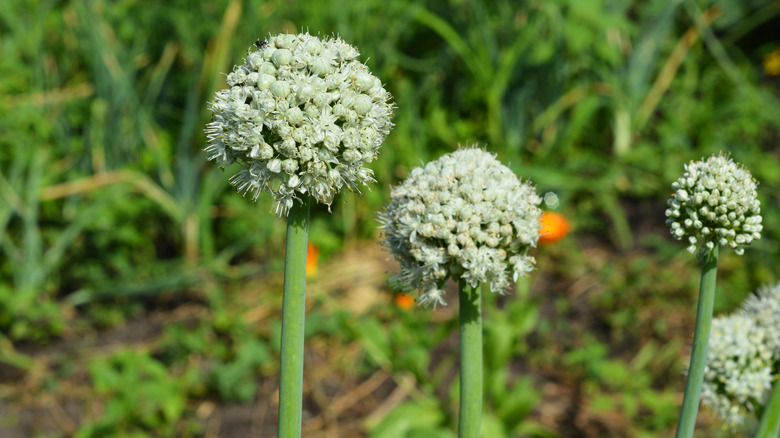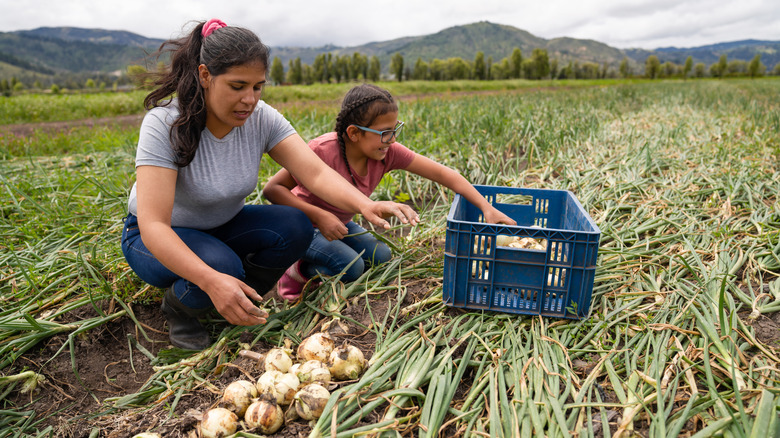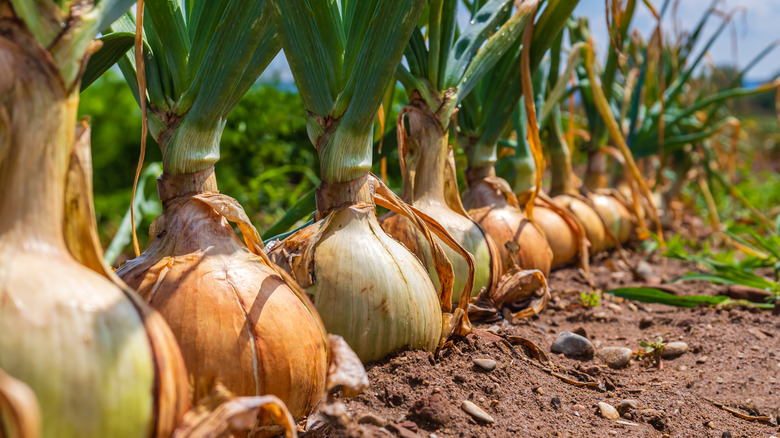What It Means If Your Onion Plant Starts Flowering
If your onion plant starts flowering, you're encountering a natural but often misunderstood process called onion bolting. It signifies a major shift in your onion plants' life cycle. Onion bolting occurs when your plant, which is typically a biennial, decides to flower and produce seeds prematurely. In an ideal world, an onion spends its first year growing and developing its bulb, reserving flowering and seeding for its second year. However, as any seasoned gardener knows, the ideal scenario is a rare luxury in the unpredictable world of gardening. The visual signs of bolting in onions are unmistakable and quite fascinating to observe. The plant suddenly bears a new bolting stem, from which a pod emerges. This pod is the onion's attempt at securing its legacy through seeds. Post-pollination, these seeds start forming, marking the culmination of the plant's accelerated life cycle.
But why does this happen? The triggers for bolting are rooted in environmental stress. Onions are particularly sensitive to changes in their surroundings. Extreme temperatures can send your onions into survival mode. They perceive these conditions as threats — a signal that they might not make it through the season. Thus, in a desperate attempt to ensure their species' continuation, they switch gears from growing bulbs to producing seeds. Bolting is essentially a survival mechanism — an urgent push to reproduce before adverse conditions potentially cut its life short. This fascinating, albeit inconvenient, process is a stark reminder of the resilience and adaptability of plants.
What to do with bolted onions
Dealing with bolted onions can feel a bit like encountering a plot twist in your gardening story. It's unexpected, and you might not be sure how to react. But worry not, because even in this situation, there's a fruitful way forward. The most practical thing to do is to accept this natural course and adjust your gardening strategy accordingly. Once the onion plant decides to bolt, its priorities shift from nurturing the bulb to producing seeds. This change means the bulb's growth and flavor development take a back seat, often leading to a less-than-ideal harvest. However, this doesn't mean all is lost.
The first step in handling bolted onions is to dig them up. This might feel counterintuitive, especially if you were eagerly anticipating a bountiful harvest, but it's a necessary move to prevent further energy from being diverted to seed production. After unearthing these onions, the next immediate action is to either snip off the flower at the top or remove the entire bolting stem. Although this won't reverse any changes that have already occurred in the bulb, it prevents further deterioration. Now, what do you do with these bolted onions? Well, although they're not ready to harvest, they are still edible. The taste might differ slightly from what you're used to, but they're far from wasted. Incorporate them into recipes where their altered flavor won't be as noticeable, such as in stews, soups, or sauces.
Preventing bolting in onions
The key to preventing bolting lies in understanding the onion's perspective. Since they respond dramatically to environmental stressors, you need to create an ideal environment. Start by selecting the right variety of onions. Some varieties are more prone to bolting than others, so it pays to do your homework or consult with local gardening experts. Opt for heat-treated varieties known to be resilient to bolting. When it comes to planting, timing is everything. Planting at the wrong time exposes young onions to extreme temperatures, which can trigger bolting. Sow seeds four weeks before the anticipated final frost date. Alternatively, research the ideal planting times for your region and stick to them. Next up is water, the elixir of life. Your onion plants need just the right amount. Irregular watering, whether it's too much or too little, can stress your onions out, so try to set up a consistent watering schedule.
Protecting your onions from the whims of the weather is crucial. During extreme temperatures, be it a sudden heatwave or an unexpected cold snap, use row covers or other protective measures. This extra layer of security can make all the difference in preventing bolting. Finally, be gentle with your onions. Avoid any mechanical stress, like rough handling, that can damage your onions. Onions are delicate, and physical damage can send them into survival mode, leading to bolting.


